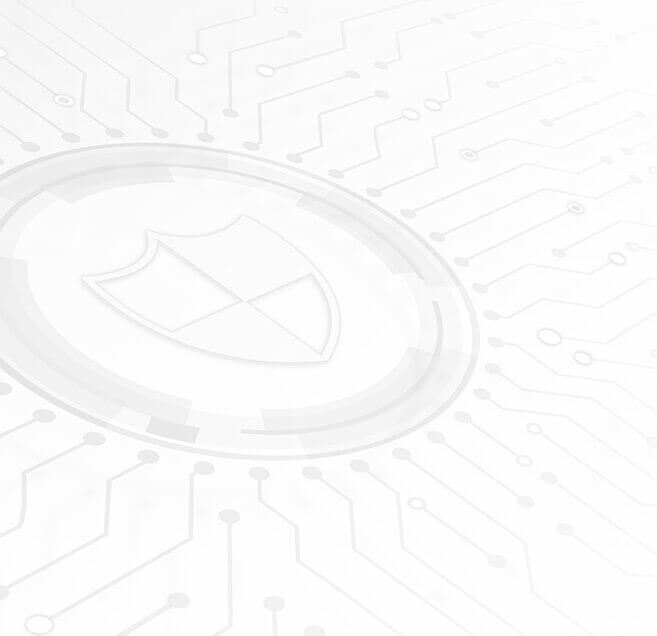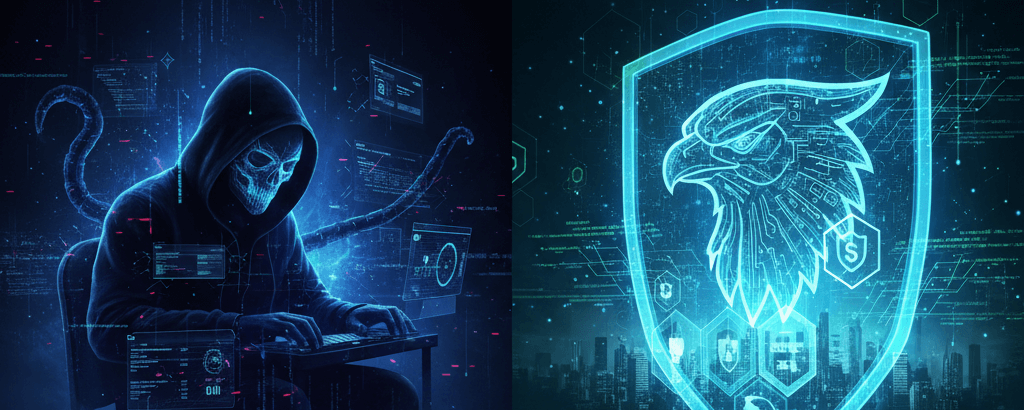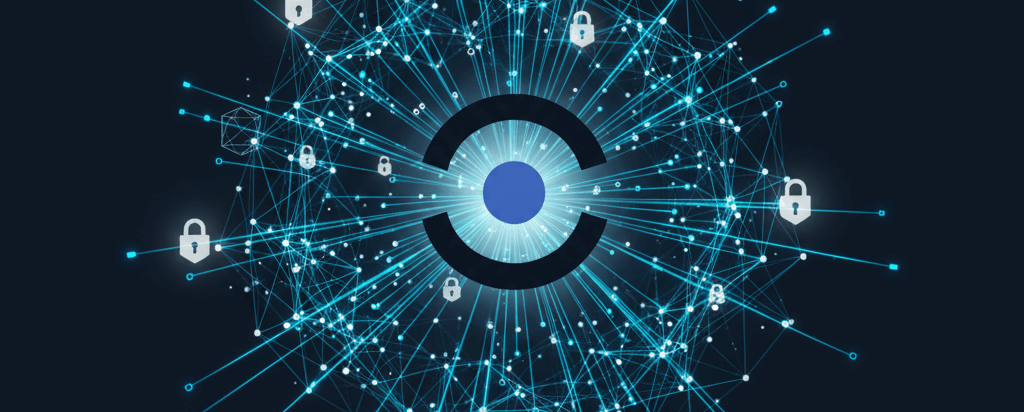
Virtual CISO (vCISO): Unpacking the Strategic Advantages and Disadvantages for Modern Businesses
The increasing complexity of cyber threats and the tightening regulatory landscape have made strong cybersecurity leadership essential rather than optional. Organisations across various sectors are facing a constant onslaught of sophisticated attacks, along with rising demands for data protection and compliance. The traditional approach of hiring a full-time Chief Information Security Officer (CISO) presents significant challenges, especially for small to medium-sized businesses (SMBs) and rapidly growing enterprises. The demand for skilled CISOs currently exceeds the supply, making full-time hires costly and often impractical.
This is where the concept of a virtual CISO (vCISO) has emerged as a flexible alternative. A vCISO offers executive-level cybersecurity guidance and strategic oversight on a flexible, contractual, or fractional basis, typically working remotely. They help organisations align their security strategies, meet compliance standards, and proactively reduce cyber risks.
The market for vCISO services has surged in recent years due to the growing number and complexity of cyberattacks targeting SMBs, along with ongoing increases in compliance requirements. For many businesses, choosing to adopt a vCISO is not just about cost savings; it signifies a crucial shift towards accessible, expert-driven security that can be vital for survival and regulatory compliance in a challenging digital environment.
This white paper will explore the comprehensive advantages and potential disadvantages of adopting a vCISO model to meet diverse organisational needs.
vCISO vs. In-house CISO: A Comparative Overview
Understanding the fundamental differences between a full-time, in-house CISO and a virtual CISO is crucial for informed decision-making. While both roles aim to strengthen an organisation’s cybersecurity posture, their execution, scope, and organisational suitability vary significantly. A traditional CISO is a full-time employee, deeply embedded within the organisation, managing daily operations, and reporting to executives with a consistent presence. This individual is a fixture, part of the payroll with an all-encompassing role that includes hands-on leadership and crisis response.
In contrast, a virtual Chief Information Security Officer is a contracted expert, often from an external firm, providing strategic guidance and support on a flexible, part-time, or project-based arrangement. This model, sometimes referred to as a fractional CISO or CISO as a Service, offers a solution to a persistent challenge: how to access deep cybersecurity expertise without the overhead of a permanent hire.
Aspect |
In-house CISO |
Virtual CISO (vCISO) |
| Employment Status | Full-time employee, permanent fixture | Contracted freelancer or firm, external |
| Engagement Model | Consistent, daily leadership | Flexible, part-time, project-based, on-demand |
| Cost Structure | High salary, benefits, bonuses, significant overhead (e.g., median £180,000/year) | Flexible pricing (hourly, project, retainer); fraction of the cost (e.g., £37,000-£110,000/year, potentially 70% savings) |
| Recruitment Time | Longer due to competitive market and talent scarcity | Quicker onboarding, often readily available |
| Expertise Scope | Deep knowledge of one organisation, but potentially limited wider industry exposure | Broad experience across multiple industries and clients; collective team expertise |
| Organisational Integration | Deeply embedded, builds strong internal trust and alignment | Less direct integration (outsider perspective) |
| Primary Focus | All-encompassing, daily operations, crisis response | Strategic advice, risk assessments, compliance checks, specific projects |
| Team Management | Manages an in-house team of security specialists | Manages a remote team or collaborates with existing in-house IT/security teams |
| Contractual Obligation | Long-term employment contract, harder to terminate | Short-term contract, easier to adjust or terminate if not satisfied |
| Crisis Management | Available for immediate response, but may face internal delays | Immediate response based on contract terms, often more agile due to external focus |
| Organisational Suitability | Large companies with extensive digital resources and complex, ongoing security requirements | Smaller organisations, those initiating a cybersecurity program, or businesses with fluctuating security needs |
The Strategic Advantages of Adopting a vCISO Model
The growing popularity of the Virtual Chief Information Security Officer model is a testament to its compelling advantages, offering a modern solution to persistent cybersecurity challenges without the overhead of a permanent hire.
Cost-Effectiveness and Budget Optimisation
Hiring a full-time CISO is a significant financial undertaking, with annual salaries averaging six figures, often exceeding £180,000 per year, before factoring in benefits, paid training, additional overhead costs, and the months it takes to find the right cultural fit. For many SMBs, such an investment is simply impractical or beyond budget limitations.
A vCISO, in contrast, offers access to high-level expertise at a fraction of the cost, with annual engagements typically ranging from £37,000-£110,000/year, potentially saving up to 70% in salary alone. Businesses pay only for the time and services needed, avoiding recruitment, onboarding, relocation, and ongoing employment expenses. This significant reduction in financial outlay directly addresses the budget constraints that often prevent organisations from securing top-tier cybersecurity leadership. By making high-level cybersecurity leadership affordable, the vCISO model helps democratise access to essential security expertise, allowing more businesses to implement robust programs. This accessibility can lead to an overall improvement in the cybersecurity posture of the broader business ecosystem, as more companies can afford to be proactive rather than merely reactive. It also shifts the perception of cybersecurity from an expensive burden to a manageable, strategic investment with a clear return on investment.
Access to Diverse, Top-Tier Cybersecurity Expertise
Virtual CISOs bring a broad range of knowledge and insights gained from working with multiple clients across various industries, providing a wide perspective on security challenges and best practices. This diverse experience allows them to apply proven strategies and innovative approaches tailored to specific organisational challenges, unlike an in-house CISO whose expertise might be deep but potentially limited to one organisation’s unique context. This exposure to diverse threat landscapes and regulatory environments enables them to accumulate a broader and more current understanding of emerging threats and effective countermeasures.
Furthermore, many vCISO services are provided by a team of specialists, ensuring access to a collective pool of expertise in areas like compliance, risk management, penetration testing, and threat intelligence. This “team of experts” model ensures comprehensive coverage and advanced capabilities, providing a more robust and adaptive security posture. This exposure makes vCISOs particularly adept at navigating the rapidly changing cybersecurity landscape, as they continually learn from a wider array of real-world scenarios. This reduces the risk of an organisation falling behind on security trends due to a singular, internal perspective.
Flexibility and Scalability of Services
The virtual chief information security officer model offers flexibility, enabling businesses to scale cybersecurity services up or down according to fluctuating security needs or specific project requirements. Whether it is part-time leadership, project-based support, or on-demand assistance for compliance audits or managed security awareness training sessions, vCISOs can accommodate diverse requirements. This adaptability is crucial for growing businesses that need to scale their security efforts quickly without the long-term commitment of a full-time hire.
The ability to dynamically adjust cybersecurity investment means organisations can optimise their resource allocation, ensuring that cybersecurity spending is efficient and responsive to their current risk profile, growth trajectory, or specific project demands. This avoids the underutilisation of resources that can occur with a full-time CISO during periods of lower security activity. This agility enables businesses to be more proactive in addressing specific, time-bound initiatives, such as compliance projects or incident response tasks. It positions cybersecurity as a responsive function that can adapt to business changes, rather than a fixed overhead that might not always align with evolving priorities.
Rapid Deployment and Accelerated Time-to-Value
Hiring a full-time CISO can be a lengthy process involving recruitment, onboarding, and training, often taking months to find the right cultural fit. This extended hiring period represents a significant window of vulnerability for an organisation, especially if a CISO has just resigned or if the company is just starting its cybersecurity journey. A vCISO, however, can start providing value almost immediately, as they are already equipped with the necessary skills and knowledge to assess an organisation’s security posture and develop strategies.
This rapid deployment is particularly beneficial for organisations that need to lay the groundwork for a cybersecurity program from scratch, as vCISOs have experience building programs across various industries and business sizes. The immediate availability of a vCISO directly addresses this gap, allowing critical security measures to be implemented without dangerous delays, thereby minimising the window of exposure to evolving threats. This accelerated time-to-value enables businesses to quickly establish foundational security elements, such as risk assessments and incident response plans, which are crucial for immediate threat mitigation. It positions the vCISO as a crucial stop-gap or foundational builder in urgent security scenarios.
Objective Perspective and Enhanced Risk Mitigation
As external consultants, Virtual Chief Information Security Officers provide independent and unbiased cybersecurity expertise and methodologies. They can assess an organisation’s security posture without internal bias, offering a fresh perspective on vulnerabilities and risks that might be overlooked by an in-house team. Internal teams, including in-house CISOs, can sometimes be subject to organisational politics, historical biases, or a reluctance to highlight internal shortcomings. A vCISO, being an external party, is free from these internal pressures, allowing for a more honest and unflinching assessment of the security posture.
This objectivity is invaluable for conducting comprehensive risk assessments, developing robust incident response plans, and implementing security policies that proactively reduce cyber risk. They can benchmark an organisation’s program against industry best practices and emerging threats. This unbiased perspective can lead to more accurate risk identification and prioritisation, ensuring that security investments are directed towards the most critical areas. It also facilitates better communication of cyber risks to executive teams and boards in business terms, leading to more informed strategic decisions and greater support for security initiatives.
Streamlined Compliance and Regulatory Adherence
Navigating the complex world of regulatory requirements, such as GDPR, HIPAA, PCI DSS, SOC 2, NIST Cybersecurity Framework, and ISO 27001 or ISO 42001, is a significant challenge for many organisations. A vCISO brings expertise in these frameworks, helping businesses understand, implement, and maintain compliance, thereby reducing the risk of costly fines and reputational damage. They can assist in developing and refining security policies, conducting compliance audits, and ensuring adherence to industry standards.
Compliance isn’t just about avoiding penalties; it’s increasingly a prerequisite for doing business, especially with larger partners or in regulated industries. A vCISO’s deep knowledge of various regulatory frameworks transforms compliance from a daunting burden into a strategic advantage. By ensuring adherence, vCISOs enable businesses to enter new markets, secure partnerships, and build customer trust. This focus on compliance, often a key driver for vCISO adoption, allows businesses to proactively manage their legal and reputational risks. It also demonstrates a commitment to data protection, which is becoming increasingly important for maintaining customer confidence and achieving competitive differentiation.
Mitigating the Impact of CISO Turnover
The average tenure of a full-time CISO is relatively short, typically ranging from 18 to 26 months. This high turnover rate can lead to significant disruptions, loss of institutional knowledge, and repeated, costly recruitment cycles. Each departure means a loss of specific knowledge about the company’s security posture, ongoing projects, and historical context.
Virtual CISO services, particularly those provided by firms, offer continuity and reliability. If one expert departs, another can step in swiftly, sparing the organisation the scramble and ensuring consistent cybersecurity leadership. Good vCISOs aim to build strong, long-term relationships, providing a more stable security function. This approach can provide a more stable “organisational memory” for cybersecurity, ensuring continuity of strategy and operations even if individual consultants change, thereby mitigating the disruptive “cycle” of CISO hiring. This stability allows for more consistent and mature security program development over time, as the strategic direction is less likely to be reset with each leadership change. It also reduces the operational burden and associated costs of constant recruitment and onboarding for a critical executive role.
Potential Disadvantages and Key Considerations for vCISO Adoption
While the virtual Chief Information Security Officer model offers numerous benefits, organisations must also be aware of potential drawbacks and critical considerations to ensure a successful partnership.
Challenges with Physical Presence and Organisational Integration
A primary concern with a vCISO is their remote nature, which might lead to challenges in building strong, informal relationships with internal teams and stakeholders. Face-to-face interactions can be important for fostering trust and collaboration, and a limited physical presence might impact the effectiveness of certain security assessments or implementations that traditionally require onsite support. The “outsider” status of a vCISO, while lauded for its objectivity, can be a double-edged sword when it comes to deep organisational integration and influence. Lack of daily, in-person interaction can hinder the development of informal trust and understanding of subtle organisational dynamics, which are often crucial for effective change management and buy-in for security initiatives.
As an external consultant, a vCISO may also have less inherent power to influence internal decisions, particularly in organisations that do not inherently prioritise security. Integrating their cybersecurity plans into a company’s current way of doing things can cause reluctance or delays in action, as internal teams may perceive the recommendations as coming from an external, less invested party. Organisations considering a vCISO must proactively address these potential integration challenges through clear communication protocols, defined reporting structures, and by identifying active internal champions who can advocate for and facilitate the vCISO’s recommendations. The success of the vCISO often depends as much on the client’s willingness to integrate and empower them as it does on the vCISO’s expertise.
Managing Availability and Communication Expectations
Depending on their client load, a virtual Chief Information Security Officer’s availability might vary, potentially leading to delays in responding to urgent security incidents or inquiries. While many vCISOs offer on-demand support, the reality of juggling multiple contracts can sometimes create perceived limitations in responsiveness, especially for ad-hoc, critical situations. Communication barriers can arise because a vCISO, acting as an outside party, simply won’t be as well-versed in the company’s specific challenges, objectives, and history as a traditional CISO who is deeply embedded in the daily operations.
However, the concern about availability is not inherent to the vCISO model itself, but somewhat dependent on the specific provider’s structure and the agreed-upon engagement model. For instance, some vCISO services are provided by agencies with entire teams of experts, which ensures better availability of services for the client’s team. This highlights that potential clients should thoroughly vet a cybersecurity leadership as a service provider’s capacity and service level agreements (SLAs) to ensure their availability aligns with the organisation’s critical security needs, especially for incident response. It also underscores the importance of clearly defining the scope of work and communication expectations upfront.
Addressing Perceptions of Long-Term Commitment
While flexibility is a core advantage of the vCISO model, it could also lead to a perception of a lack of long-term commitment. A vCISO’s short-term engagement might not always align with an organisation’s long-term security goals, especially if the relationship is purely transactional and not built on a strategic partnership. This perception can arise from the contract-based nature of the role, leading some to believe that the vCISO’s investment in the organisation’s future is less profound than that of a full-time employee.
However, this “lack of commitment” is often a perception or a risk that can be managed, rather than an inherent flaw. Many successful virtual Chief Information Security Officers and their firms actively work to build strong, truly long-term relationships, demonstrating a vested interest in the client’s security maturity. Success stories show vCISOs building comprehensive cybersecurity programs from the ground up and driving continual improvements, which requires sustained dedication. This suggests that “commitment” is a function of relationship building and shared strategic vision, not solely contract length. Organisations should, therefore, select a vCISO provider that prioritises strategic partnership over mere transactional service delivery, looking for those who demonstrate a vested interest in the client’s long-term security maturity, as evidenced by their approach to roadmapping, continuous improvement, and communication.
Ensuring Alignment with Specific Business Goals
One major challenge in vCISO implementation is ensuring that the services align precisely with a company’s specific business goals and risk tolerance. Without proper risk assessments and clear key performance indicators (KPIs), security efforts might not be focused on actual business-critical risks, potentially leading to wasted resources and a false sense of security. The risk of vCISO services not aligning with business goals can result in misdirected investments and a failure to address the most impactful threats to the organisation’s core operations.
This highlights that a virtual Chief Information Security Officer isn’t just a technical expert; they must also function as a strategic business partner. Their value is maximised when they can translate complex technical risks into understandable business terms and align security initiatives with broader organisational objectives. This necessitates a thorough upfront assessment of organisational needs and a clear definition of the vCISO’s scope and expected outcomes. Such a proactive approach ensures that security efforts directly support business resilience and growth, making cybersecurity an enabler rather than a potential bottleneck.
Navigating Third-Party Risk Management
For organisations relying on a network of independent third parties, managing security issues can be complex and not fully visible or manageable. The 2020 SolarWinds breach serves as a stark reminder of the significant risks posed by compromised supply chains, impacting over 30,000 organisations through a single vendor vulnerability. This challenge becomes a specific consideration for
vCISO adoption because the vCISO is also a third-party. This creates a meta-challenge: how does the vCISO help manage other third-party risks while being one themselves?
A vCISO’s expertise in vendor risk management is crucial, encompassing initial screening, ongoing monitoring, and clear incident response plans for all third-party engagements. When selecting a vCISO, organisations should specifically inquire about their approach to third-party risk management and their ability to integrate with existing vendor assessment processes. This also underscores the need for robust contractual agreements that specify security expectations and liability terms for all third-party engagements, including the vCISO’s own services.
Best Practices for Selecting and Maximising Your Virtual CISO Partnership
To fully leverage the benefits of a virtual Chief Information Security Officer and mitigate potential challenges, a strategic approach to selection and ongoing partnership is essential.
Defining Scope and Expectations
Before engaging a vCISO, organisations must clearly define the role and responsibilities. This involves determining whether the expert will focus predominantly on cybersecurity strategy, compliance management, risk management, incident response, or a combination of these critical areas. It is imperative to consult with key internal stakeholders, such as IT managers and executive leadership, to ensure alignment with broader business objectives and to accurately identify existing security gaps that the vCISO is expected to address. A well-defined scope ensures that the vCISO’s efforts are precisely targeted to the organisation’s most pressing needs and strategic priorities.
Evaluating Expertise, Certifications, and Track Record
When selecting a virtual Chief Information Security Officer, it is crucial to look for extensive industry experience and relevant certifications such as Certified Information Systems Security Professional (CISSP), Certified Information Security Manager (CISM), Certified Information Systems Auditor (CISA), or Certified Chief Information Security Officer (CCISO). These certifications indicate a foundational level of knowledge and adherence to industry best practices. Prioritise providers with a proven track record, thoroughly reviewing client testimonials, case studies, and concrete examples of security improvements they have led for other organisations, especially those within a similar industry or facing comparable challenges. Ensure they possess a strong background in implementing and managing recognised security frameworks like NIST, CE, CE+, ISO 27001, ISO 42001 and CIS Controls, as well as expertise in risk assessment, compliance, and incident response.
Prioritising Communication and Cultural Fit
A successful vCISO must possess strong communication skills, capable of translating complex technical concepts into clear, actionable business strategies for executive leadership, board members, and technical teams alike. Effective communication is paramount for fostering collaboration across departments and ensuring the smooth implementation of security initiatives. Beyond technical acumen, assessing their ability to adapt to your organisation’s existing culture, processes, and goals is vital. While an external perspective is valuable, the vCISO’s capacity to integrate and work seamlessly with internal teams will significantly influence the partnership’s effectiveness and the overall success of the cybersecurity program.
Conclusion
The rise of the virtual CISO model represents a significant evolution in how organisations approach cybersecurity leadership. For many businesses, particularly SMBs and those with evolving security needs, the strategic advantages of a virtual Chief Information Security Officer are compelling. These include substantial cost-effectiveness, access to a diverse pool of top-tier cybersecurity expertise, unparalleled flexibility and scalability, rapid deployment, and an objective perspective that enhances risk mitigation and streamlines compliance efforts. Furthermore, the vCISO model helps mitigate the disruptive impact of high CISO turnover rates, providing greater continuity in cybersecurity strategy.
However, organisations must also acknowledge and proactively address potential disadvantages, such as challenges related to physical presence and deep organisational integration, managing availability and communication expectations, perceptions of long-term commitment, ensuring precise alignment with specific business goals, and navigating the complexities of third-party risk management.
Ultimately, the decision to adopt a vCISO service, or to engage with cybersecurity leadership as a service, hinges on a careful assessment of an organisation’s unique budget, resources, and cybersecurity demands. By defining clear scopes, thoroughly evaluating expertise and track records, and prioritising strong communication and cultural fit, businesses can forge highly effective partnerships with providers.
Mondas’ vCISO Offering
Mondas offers a flexible virtual Chief Information Security Officer (vCISO) service designed to help organisations with their cybersecurity needs. Their approach focuses on providing strategic guidance and robust defenses to enhance cybersecurity and resilience in the evolving digital threat landscape.
Here are some of the benefits of their vCISO service:
- Tailored Security Strategies: They evaluate or create cybersecurity strategies aligned with an organization’s business goals and design a customized security roadmap.
- Ongoing Support and Guidance: Mondas provides continuous engagement through regular meetings and reports, offering security guidance via various communication channels, including email, phone, and video calls.
- 24/7 Security Operations Support: They offer round-the-clock support for both their internal solutions and systems managed by clients or third parties.
- Broad Expertise: The vCISO team brings extensive experience from various organizations, covering areas like critical national infrastructure security and international cybersecurity.
- Advanced Practices: They implement leading-edge strategies, apply global cyberthreat intelligence, enhance resilience with exercises and simulations, and develop Security by Design practices.
- Integration of Standards: Mondas incorporates and enforces international cybersecurity standards and best practices.
You can find more information about their vCISO services on Mondas here.
References
- The vCISO Academy: Transforming MSPs and MSSPs into cybersecurity powerhouses – Help Net Security, accessed on June 17, 2025, https://www.helpnetsecurity.com/2025/03/25/cynomi-vciso-academy/
- What is a Virtual CISO (vCISO) and Should You Have One on Your Team?, accessed on June 17, 2025, https://cloudsecurityalliance.org/articles/what-is-a-virtual-ciso-vciso-and-should-you-have-one-on-your-team
- Enhancing Cyber Resilience – vCISO Case Study – Kroll, accessed on June 17, 2025, https://www.kroll.com/en/insights/publications/cyber/case-studies/taking-underwriters-security-posture-at-risk-to-resilient
- LevelBlue Cybersecurity Consulting and Professional Services, accessed on June 17, 2025, https://levelblue.com/consulting-and-professional-services
- What does a vCISO do? Is it worth it and how do you spot a good one vs a bad one? – Reddit, accessed on June 17, 2025, https://www.reddit.com/r/cybersecurity/comments/10lm59s/what_does_a_vciso_do_is_it_worth_it_and_how_do/
- What is a virtual CISO (vCISO)? A complete guide – Vanta, accessed on June 17, 2025, https://www.vanta.com/resources/virtual-ciso
- vCISO (Virtual CISO) – Digital Marketplace, accessed on June 17, 2025, https://www.applytosupply.digitalmarketplace.service.gov.uk/g-cloud/services/367569351959138





